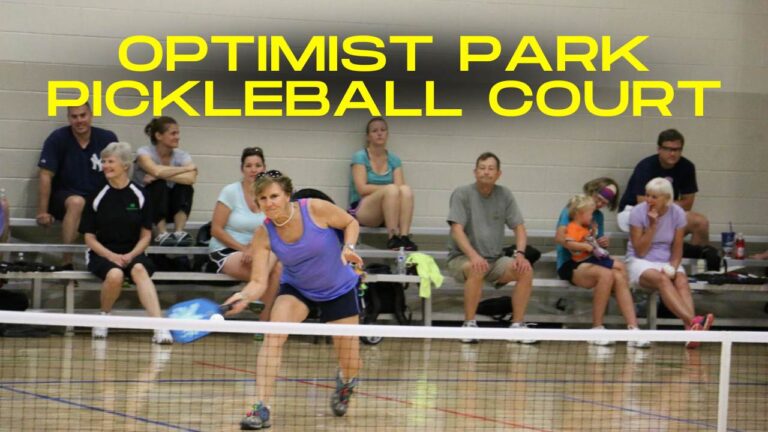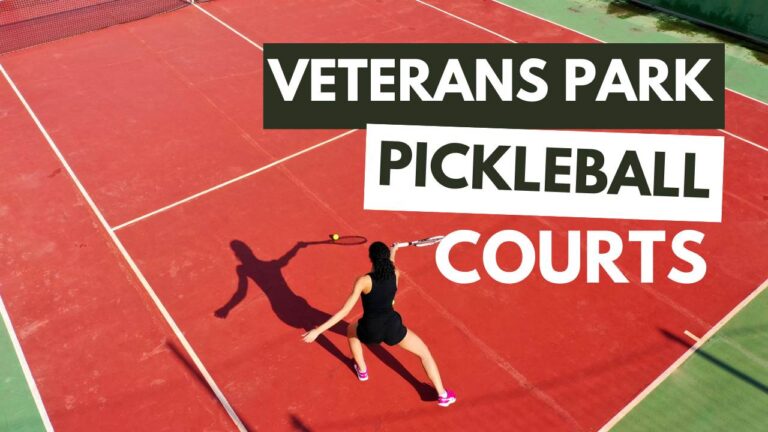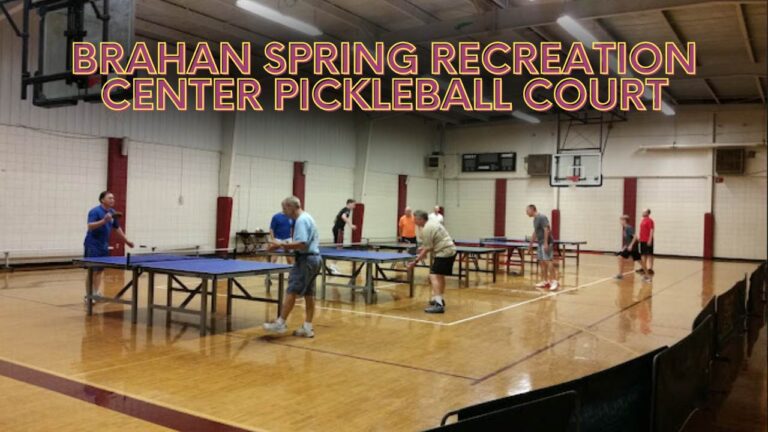As a pickleball player, you know that choosing the right equipment can make all the difference on the court. From paddle width to grip material, every aspect of your gear influences your play style and overall game. One factor that often gets overlooked but is just as important is Guide to Choosing Best Pickleball Paddle Weight.
Guide to Choosing Best Pickleball Paddle Weight
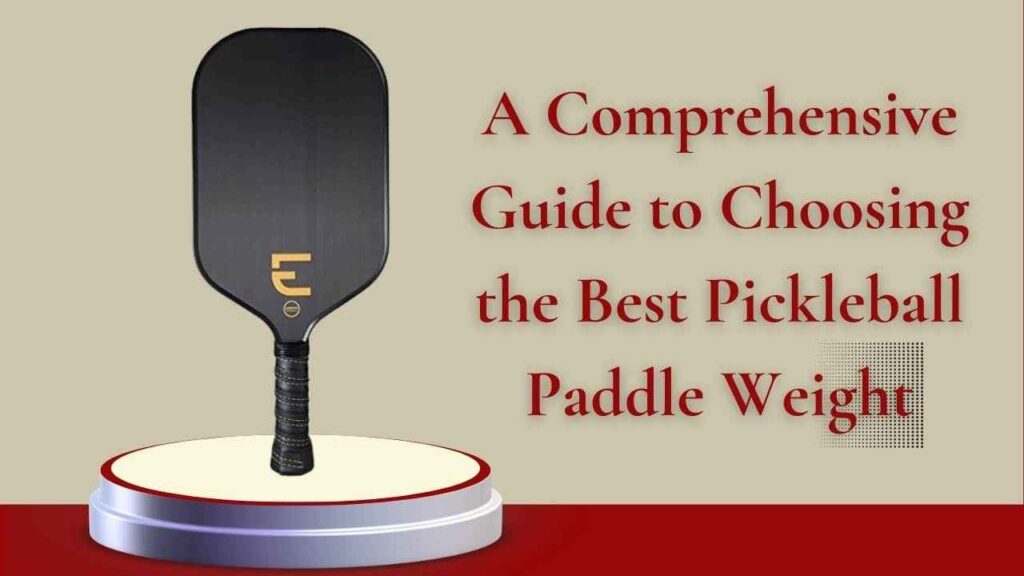
As a pickleball player, you know that choosing the right equipment can make all the difference on the court. From paddle width to grip material, every aspect of your gear influences your play style and overall game. One factor that often gets overlooked but is just as important is Guide to Choosing Best Pickleball Paddle Weight.
The weight of your paddle affects everything from swing speed to maneuverability and power. Choosing the right weight for your playing style can enhance your skills and give you an edge over your opponents.
But how do you determine what that weight should be? In this article, we’ll dive into what makes paddle weight so crucial in pickleball and explore the factors that go into determining which weight will best suit you on the court.
Whether you’re a beginner or a seasoned pro, understanding how to choose the right paddle weight will help take your game to new heights. So let’s take a closer look at why weight matters when it comes to pickleball paddles.
Definition of Paddle Weight and Its Impact on Performance
Paddle weight is simply the number of ounces or grams that a paddle weighs. While there are no strict rules dictating how heavy or light a paddle should be, most paddles weigh between 6-14 ounces (170-397 gms).
The weight distribution can vary from being evenly distributed throughout the entire paddle to having more weight towards either end. The impact that a paddle’s weight has on performance depends largely on player preference and playing style.
A heavier paddle may provide more power behind shots due to its increased mass when it comes into contact with the ball, while lighter paddles may offer more maneuverability for quick reaction times at the net. Control also plays an important role in choosing an appropriate weight for your skill level as lighter paddles are easier to control but they also offer less stability than heavier ones.
The Importance of Paddle Weight
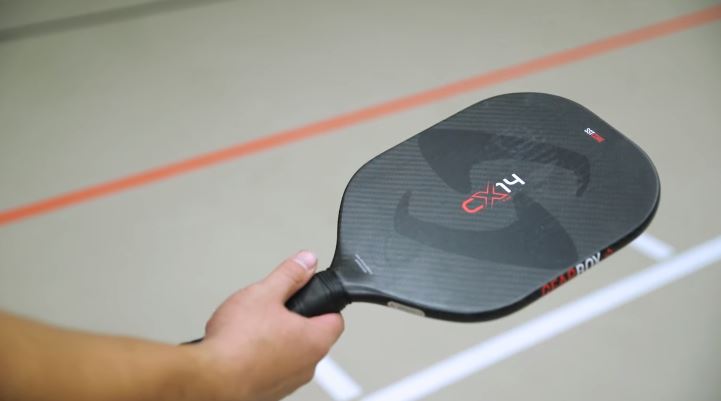
When it comes down to it, pickleball paddles are all about striking a balance between power and precision. The optimal balance for each player may vary based on their unique physical abilities, skill level, and playing style.
One key factor in this balance is paddle weight. A heavier paddle will naturally generate more power behind each shot while sacrificing some maneuverability in exchange for stability and durability.On the other hand, a lighter paddle allows for quickness and speed but may lack necessary force behind shots. It’s important to note that there is no one-size-fits-all solution when it comes to choosing paddle weights — what works best for one player may not work at all for another depending on their individual preferences and needs.
Discussion on How Different Weights Affect Gameplay and Player Preference
Player preference is one of the primary factors that determine what type of pickleball paddle they choose based on their desired gameplay experience. For example, some players may prefer lighter paddles as they may feel faster at reacting to balls near them while others might like heavier paddles because they generate more power behind their shots which helps them win points. Another factor that affects player preference is whether they play singles or doubles.
Singles players may prefer lighter paddles to help increase their reaction time and reduce fatigue throughout the match. On the other hand, doubles players may benefit from heavier paddles as it can provide more power behind shots, making it easier to hit winning shots from the baseline.
Ultimately, the decision on what weight paddle to use is dependent upon what works best for you as an individual player. It’s important to try out different weights and feel how they perform in gameplay before settling on a final choice.
Factors That Determine The Best Weight For A Paddle
So what are those individual factors that go into determining the best weight for a paddle? Here are a few to consider:
Player’s Skill Level and Playing Style
Players at different skill levels will have varying preferences when it comes to paddle weight. A beginner may prefer a lighter option that allows for easier maneuverability and control, while an experienced player may want something heavier to generate more power behind their shots.
Additionally, playing style is an important consideration. Players who favor fast play with quick reactions may benefit from a lighter paddle, while those who focus on control and accuracy might prefer something heavier.
One of the most important factors to consider when choosing the weight of your pickleball paddle is your skill level and play style. If you are a beginner, you may want to start with a lighter paddle so that you can focus on learning how to control the ball.
On the other hand, if you are an experienced player who wants more power and stability, a heavier paddle might be a better choice. Your playing style is also important when choosing paddle weight.
If you prefer a finesse game with more dinks and drops, then you may want a lighter paddle that offers more maneuverability. Alternatively, if you like to play a power game with lots of smashes and drives, then a heavier paddle will give you more power and stability.
Comfort and Feel Preferences
Another factor to consider when choosing your pickleball paddle weight is your comfort level with it. A heavier paddle may be uncomfortable for some players because it requires more physical effort to swing it. Conversely, some players might find light paddles too unstable or lacking in feedback when hitting the ball.
When deciding on the best weight for your pickleball paddle, pay attention not only to how comfortable it feels in your hand but also how it feels after prolonged use. You don’t want to end up with an uncomfortable or painful arm after hours of playing.
Physical Ability and Strength
It’s important to choose a pickleball paddle that suits your physical ability and strength as well. Generally speaking, stronger players can handle heavier paddles better than weaker ones as they have enough strength in their arms to generate sufficient momentum for powerful shots. However, an overly heavy or light paddle can cause injury over time by putting unnecessary strain on joints or muscles while swinging or hitting balls.
It’s crucial to choose a weight you feel comfortable with, as it will help reduce the risk of injury and improve your overall performance on the court. Considering these factors before choosing the best weight for your pickleball paddle is important.
By taking into account your skill level, playing style, comfort and feel preferences, physical ability and strength, you’ll be able to find a paddle that works best for you. In the next section of this article, we’ll take a closer look at different paddle weights and their advantages and disadvantages.
Lighter Paddle Weights (6 to 7 ounces)
Light paddles typically weigh between 7-8 ounces and are the preferred choice for beginner or intermediate players. One of the key benefits of using a lighter paddle is that it offers greater maneuverability, which can be especially useful for players who tend to spend more time at the net.
At the net, having a paddle that can be easily maneuvered translates to better control over your shots. This is particularly important when playing doubles, where split-second reactions are essential to winning points.
Lighter paddles make it easier to respond quickly to volleys and dinks, providing an added level of precision and accuracy. If you’re new to pickleball or looking for a more forgiving paddle that’s easy on your body, then a light paddle may be just what you need.
They offer good control without requiring as much strength or stamina as heavier paddles do. They’re also great for children or seniors who may have difficulty handling heavier equipment.
The Advantages of Lighter Paddle Weights
If you’re looking for a paddle that gives you ultimate control and maneuverability, then a lighter paddle weight is what you need. With less weight to carry, lighter paddles allow players to move quickly and with more agility on the court.
This makes them particularly well-suited for players who rely on quick reactions and fast footwork. Another major advantage of lighter paddles is their ability to provide precise control over your shots.
Since they’re easier to maneuver, players can more accurately hit the ball where they want it to go, making them a popular choice for those who like to mix up their shots and play with finesse. Lighter paddles offer faster swing speeds than heavier ones.
This means that as a player you can generate more speed behind your shots with less effort. This in turn allows you to be more aggressive with your game-play when required.
The Disadvantages of Lighter Paddle Weights
Despite their advantages in terms of control and speed, lighter paddles do come with some trade-offs that should be considered before making a purchase decision. Firstly, lighter paddles are not as powerful as their heavier counterparts.
They don’t have the same mass behind them which limits how hard they can hit the ball when compared to heavier alternatives. Secondly, due to having less weight behind the head of the paddle there is also less stability when hitting the ball.
Stability helps keep the paddle steady during impact giving better accuracy on contact points which becomes increasingly important at higher levels of play where accuracy comes at a premium. Some players may find that light-weighted paddles have too little substance or feel like they lack quality due to its lightness which is purely down personal preference.
Why You May Choose a Lighter Paddle Weight
If your style of play is more finesse and control-based, then a lighter paddle would be ideal. This style of play requires quick reactions and agility to move around the court quickly to intercept, block or hit the ball where you want it to go. Lighter paddles can also be beneficial for players who are new or returning to pickleball as they allow more agility during rallies which is useful in allowing you cover the court when learning game-play.
Lighter paddles require less physical effort than heavier ones, making them less tiring over time. Ultimately determining which weight class fits your playing style is key as well as considering your physical capabilities when selecting paddles especially if you plan on playing regularly on a competitive level.
Middle Ground Paddle Weights (7 to 8 ounces)
Paddles in this weight range are popular among players who want a well-balanced combination of power and control. Medium-weight paddles offer better stability than lighter ones while still allowing for quick movements at the net. This makes them an excellent choice for players who enjoy aggressive play styles but still want accuracy on their shots.
If you’re looking to improve your game by adding more power behind your shots but don’t want to sacrifice control in the process, then consider trying out a medium-weight paddle. These paddles also work well in outdoor environments where wind conditions can affect gameplay since they are less likely to be pushed around by gusts of wind.
For many pickleball players, a paddle that falls in the middle ground of weight is the best choice. A paddle weighing between seven to eight ounces offers a balance between power and control, making it an attractive option for players who want to have the best of both worlds. This weight range is often recommended for intermediate players who have developed their skills and are ready to take their game to the next level.
Advantages: Balance Between Power and Control
The primary advantage of choosing a pickleball paddle within this weight range is that it provides an ideal balance between power and control. The paddle has enough weight to generate powerful shots while still allowing the player to maintain good control over ball placement.
This makes it easier for players to return balls accurately while also having enough power behind each shot. Another benefit of middle ground weight paddles is that they can help improve a player’s consistency on the court.
They offer just enough stability and control without being too heavy or unwieldy, which means that players can hit more consistent shots with ease. And because these paddles are generally easier to handle than heavier ones, they’re less likely to cause fatigue in players after long periods of play.
Disadvantages: May Not Be Ideal for Players with Extreme Preferences
While middle ground weight paddles do have many advantages, they may not be the right choice for everyone. Players who have extreme preferences when it comes to their paddle’s weight may find that this type of paddle doesn’t meet their specific needs.
For example, if a player likes a very light or very heavy paddle, they may not find what they’re looking for in this range. Another disadvantage is that some advanced players may find themselves outgrowing a middle ground weight paddle as they continue to improve their skills.
These players may eventually want a lighter paddle for more maneuverability or a heavier paddle for more power. However, for the majority of intermediate players, middle ground weight paddles are an excellent choice that can help elevate their game and provide them with the balance they need to succeed on the court.
Heavier Paddle Weights (8 to 9+ ounces)
If you’re a power player who likes to hit the ball hard, then a heavy paddle might be more your style. These paddles tend to weigh 8 to 9+ ounces or more and offer the best control over shots.
They are also ideal for players who like to play from the baseline, as they can provide the necessary power needed to send the ball deep into their opponent’s court. One of the downsides of using a heavy paddle is that it requires more strength and stamina to use for extended periods of time.
Heavy paddles can be tiring on your arms, shoulders and wrists, which could affect your overall performance if you’re not in good physical shape. However, if you’re willing to put in the training and conditioning necessary to handle a heavier paddle, it can give you an edge over your opponents.
Ultimately, choosing the right weight for your pickleball paddle is a matter of personal preference based on playing style, skill level and physical ability. Keep in mind that while these guidelines are helpful, experimentation is key when finding what works best for you.
Advantages: Power, Stability, Durability
If you’re a player who values power over speed and maneuverability, a heavier paddle may be the right choice for you. A heavier paddle generates more force behind each shot, making it easier to hit the ball harder and reach longer distances on the court. In addition, a heavier paddle can help provide greater stability when hitting off-center shots or volleys.
The added weight helps dampen vibrations and reduce paddle twist during contact with the ball. Another advantage of a heavier paddle is its durability.
Typically, heavier paddles are made with denser materials such as graphite or composite materials that can withstand repeated impacts without showing signs of wear and tear. This means that a higher weight paddle could last longer than a lighter one.
Disadvantages: Slower Swing Speed, Less Maneuverability
One of the most notable disadvantages of using a heavy paddle is its slower swing speed. Because it requires more force to move through the air, swinging a heavy paddle can be slower than swinging one that’s lighter. This slower swing speed may make it difficult for players to react quickly and adjust their shots on the fly.
In addition to its slower swing speed, using a heavy paddle can also result in less maneuverability on the court. The extra weight in your hand means your wrist will have to work harder to move the paddle around during play.
This increased effort required to change direction can be tiring over time and could result in decreased accuracy as fatigue sets in. Ultimately, choosing a heavier pickleball paddle comes down to personal preference and playing style.
If you’re looking for power and stability at the expense of some mobility on the court or if you have strength but limited mobility due to an injury or disability then this might be the right choice for you. However, if you value quick reactions and maneuverability over power and stability, a lighter paddle may be a better option.
How to Determine the Best Weight for You
Experimentation with Different Weights
One of the most effective methods to determine the best weight for your pickleball paddle is to experiment with different weights. Go to a local sports store or borrow paddles from friends and try out different weights in practice games. You can also rent paddles at your local pickleball court or use demo paddles provided by manufacturers.
It’s important to note that you should give each weight a fair chance and play multiple games with each before making a decision. This will give you a better idea of how each weight feels in terms of maneuverability, power, control, and overall comfort.
Seeking Advice from Experienced Players or Professionals
Another way to determine the best weight for your pickleball paddle is by seeking advice from experienced players or professionals. Look for players who have similar playing styles and physical abilities as you do and ask them about their paddle preferences.
You can also attend clinics or workshops hosted by professional players and coaches who can provide expert advice on selecting the right weight for your paddle. They may even allow you to test out different weights during these sessions.
Your Personal Preferences Matter
Ultimately, when it comes down to it, personal preferences should always play a role in choosing the best weight for a pickleball paddle. Consider factors such as your physical ability and playing style along with comfort level and feel preferences.
Remember that finding the right balance between power and control may require some compromise based on what feels most comfortable for you personally. Keep an open mind throughout the process and don’t be afraid to try something new if what you’re currently using isn’t working well for you.

